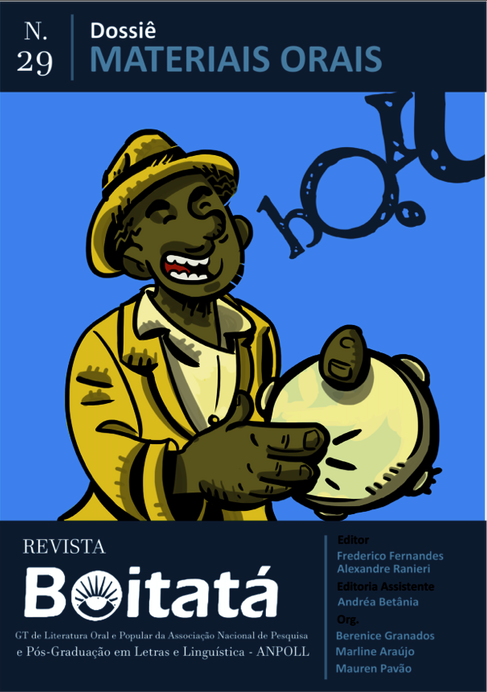Through the fields of the iberian peninsula and the tocantinense backwoods, knights and jagunços weave narratives
DOI:
https://doi.org/10.5433/boitata.2020v15.e39699Keywords:
Paths, Chronotope, NarrativesAbstract
El cantar de Mío Cid, whose the most recent known copy is that of the copyist Per Abbat, is an epic text that tells the adventures of Rodrigo Díaz who fought bravely in the reconquest of Spanish lands. In Serra dos Pilões (1995), a novel by Moura Lima, jagunços from rival groups took to the Tocantins' hinterlands for reckoning, after a tragedy in the village of Pedro Afonso. In both works, characters traveled through open spaces, mounted on fast horses that crossed valleys and mountains; or in donkeys/mules that trotted through the wild jalapoeiro backwoods. This refers to the chronotope (Bakhtin), inseparability between historical time and social space. Among several, there is a chronotope of the road where characters who promote encounters and mismatches pass. On roads in the Iberian Peninsula or Jalapão trails, characters from the works in focus organized themselves and fought to regain their honor or avenge their friends. Courage and virtue of the medieval knight or cruelty of twentieth century jagunços were built in motion. During unknown paths, when occupying the social place of those concerned with justice, under royal laws or in the absence of the State, characters from both narratives acted, underwent transformations and revealed singularized human beings. And in the great time new meanings are constructed.
Downloads
References
BAKHTIN, Mikhail. Questões de Literatura e de Estética - a teoria do romance. 4. ed. São Paulo: Unesp; Hucitec, 1998.
BAKHTIN, Mikhail. Os estudos literários hoje. In: BAKHTIN, Mikhail. Estética da criação verbal. 4. ed. Tradução de Paulo Bezerra. Martins Fontes: 2003.
CANAVAGGIO, Jean (dir.). Historia de la literatura española. Vol. I. Barcelona: Ariel, 1995.
FRUTOS, Alberto Montaner. El cantar de mío Cid: el gran poema épico hispânico. Disponível em: https://www.caminodelcid.org/cid-historia-leyenda/cantar-mio-cid/aspectos-literarios/.
Acesso em: 15 mar. de 2020.
JIMÉNEZ, Felipe B. Pedraza y CÁCERES, Milagros Rodríguez. Las épocas de la literatura española. Barcelona: Ariel, 1997.
LIMA, Moura. Serra dos Pilões. Jagunços e tropeiros. 3. ed. Gurupi: Gráfica e editora Cometa, 2001.
OLIVAL, Moema de Castro e Silva. Moura Lima: a voz pontual da alma tocantinense. Gurupi: Gráfica e Editora Cometa, 2003.
ZUMTHOR, Paul. La letra y la voz. Trad. Julián Presa. Madrid: Cátedra, 1989.
Downloads
Published
How to Cite
Issue
Section
License
Copyright (c) 2020 Boitatá

This work is licensed under a Creative Commons Attribution 4.0 International License.
Boitatá esta licenciada com CC BY sob essa licença é possível: Compartilhar - copiar e redistribuir o material em qualquer suporte ou formato. Adaptar - remixar, transformar, e criar a partir do material, atribuindo o devido crédito e prover um link para a licença e indicar se mudanças foram feitas.




















